East Javanese Traditional Musical Instruments
There are various traditional regional musical instruments that are well known abroad, one of which is from East Java.
East Java is indeed rich in culture There are Reog Ponorogo, Rawon, and others dances.
But this time we will focus on the art of music only.
Table of contents
The Development of Regional Music in East Java
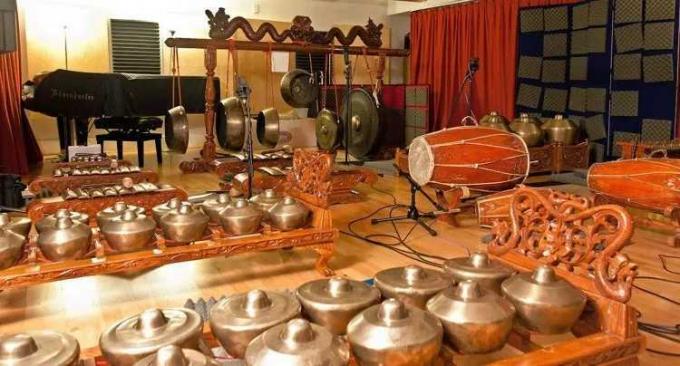
East Java is one of the areas that enliven music in the archipelago. The art of music in the East Java area has developed over time.
During the Hindu-Buddhist period, the music used by the people of East Java used tools from natural materials that functioned to accompany religious events.
At that time, the function of traditional music began to develop, which was initially only for religious events and began to function for entertainment and work.
One of the musical instruments that developed at that time was gamelan which had 5 groups. At the time of the entry of Islam, making music in the East Java area also began to vary due to the influence of Arab culture.
One example is a musical instrument that is beaten. Then at the time of the entry of culture from Europe during the colonization of musical instruments from East Java also experienced development.
Due to the many influences from outside, musical instruments from East Java have unique instruments and can be combined with modern music such as R&B, Pop and so on.
Currently, there are many musical instruments that combine traditional music and modern music to preserve Indonesian art and culture.
East Java Art and Culture
East Java has very well-known performing arts, namely ketoprak and ludruk. For dance, East Java has a variety of famous dances such as Reog Ponorogo.
For the field of music, East Java also has various types of musical instruments that usually accompany dance and performing arts in their area.
Kinds of East Java Traditional Musical Instruments
1. Bonang
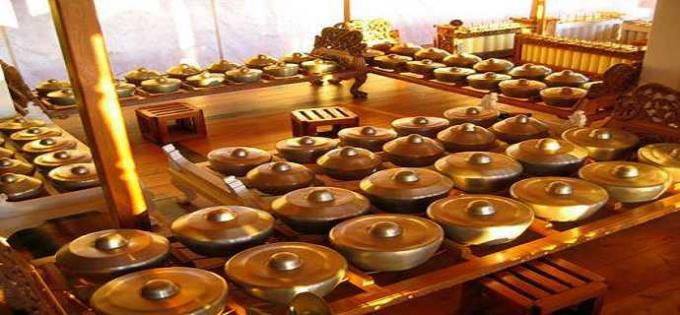
The first traditional musical instrument is Bonang, bonang is not only developed in Central Java and West Java, East Java also has this instrument.
How to use this instrument is to hit with a special tool on the protruding part of the top of the bonang. The name of the bat is called bindhi and the protruding part of the bonang is called pencon.
2. Angklung Caruk
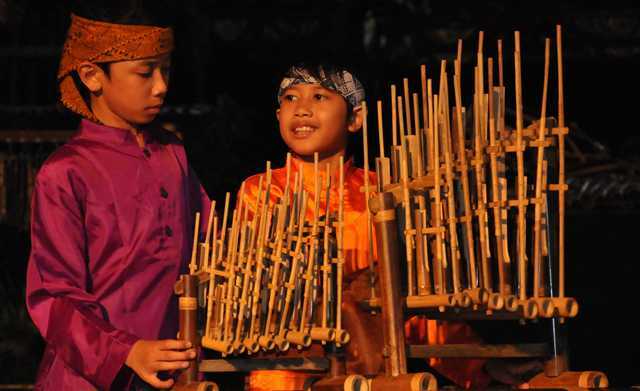
Angklung caruk is one of the musical instruments that developed in the Banyuwangi area. Same with angklung from other areas which are made from bamboo.
Usually in an angklung group played by two people to complain about their expertise. The harmonization of the angklung sari is used during the competition atmosphere.
3. Tap Esri
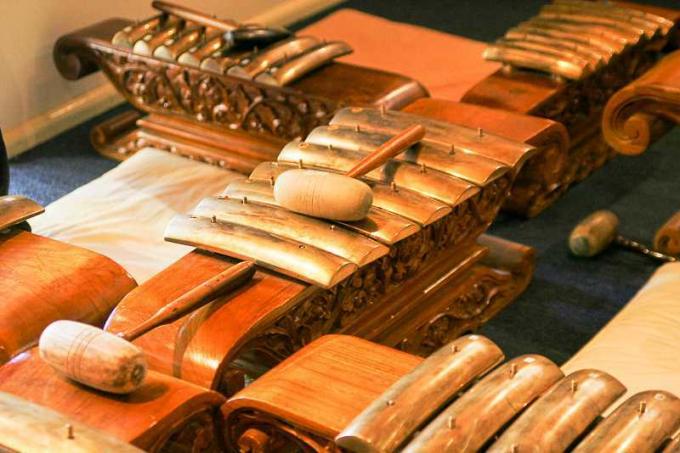
Kenthuk Esri is a musical instrument from East Java which looks like a gong. There are two Kenthuk Esri musical instruments.
How to use it is to hit on its protrusion. The esri kethuk is made of metal and produces a low sound.
4. Trumpet Reyog
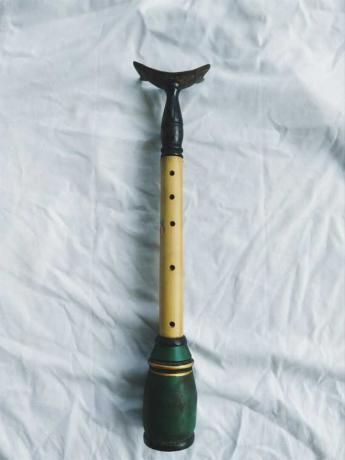
The next traditional musical instrument is the reyog trumpet which is often used to accompany the Ponorogo reyog dance.
How to play this instrument is very easy, namely by blowing like a trumpet but the sound produced by a reyog trumpet has its own distinctive sound.
5. Angklung Reog
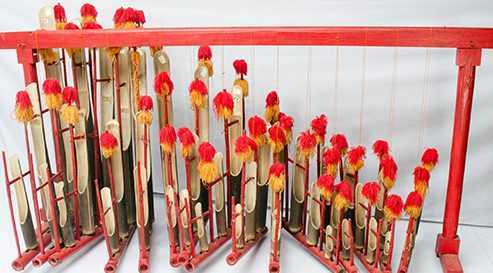
The next traditional musical instrument is the angklung reog which usually accompanies the Ponorogo reyog dance.
How to use angklung reog is by shaking the bamboo to produce sound. The selected bamboo material is bamboo which emits a loud sound.
The hallmark of the angklung reog is that it has a louder sound than other angklungs and has a color in its angklung.
6. Bamboo Flute
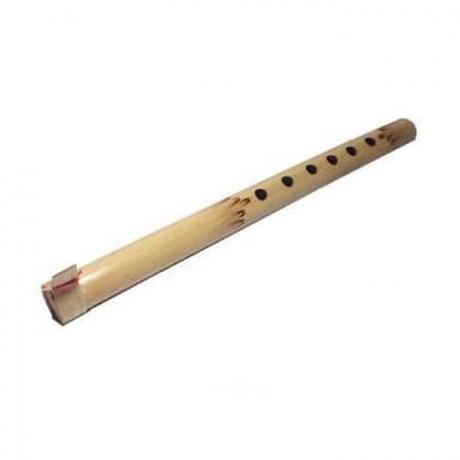
Bamboo flute is a type of musical style that is played by blowing. A typical bamboo flute from East Java has 6 tone holes and 1 hole in the back.
To play the bamboo flute using special techniques to achieve a certain tone. The sound it produces from a bamboo flute is so distinctive that it is different from a synthetic flute.
7. Bugle
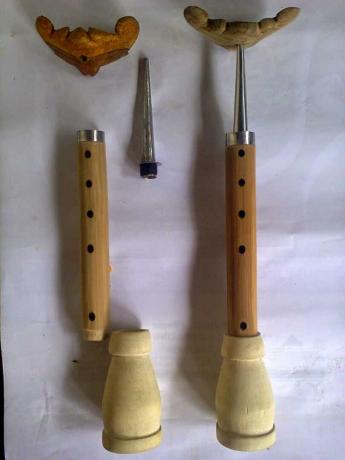
The trumpet is one of the musical instruments influenced by European culture, namely the trumpet. The method of use is also the same, namely by blowing. Selompret is usually used to accompany a dance in the Banyuwangi area.
8. Gather
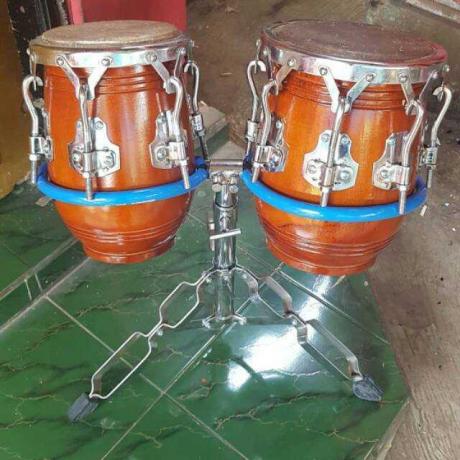
Kempul has a shape that is almost similar to a drum. The difference between the drum and the kempul is that the kempul has a heavier sound.
Kempul is made of animal skin for the wasp and wood for the body. How to play it is quite easy, namely by beating on the animal skin membrane.
The instrument played depends on the skill of a player in beating his group.
9. Banyuwangi drums
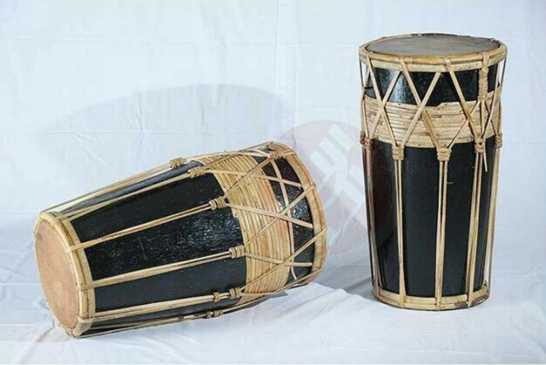
At this time Banyuwangi has its own variation on the art of music. Gedang Banyuwangi Often used to accompany an art performance that is typical of Banyuwangi.
To beat the Banyuwangi drum, you must have special skills.
10. Kluncing
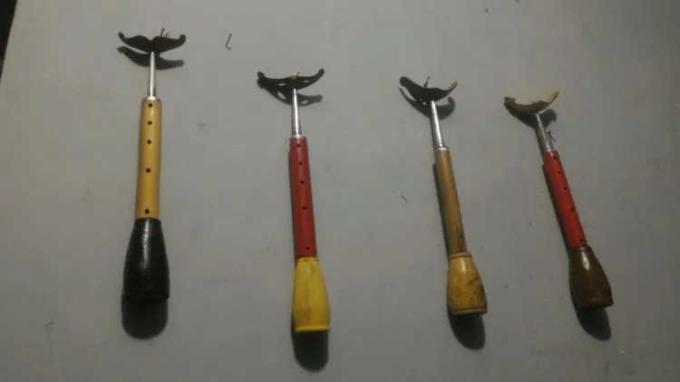
Kluncing is a musical instrument that is influenced by European culture so that the shape of kluncing is similar to a triangel. The material of the musical instrument is made of metal.
The way to play this instrument is similar to a flute being blown and using your fingers to adjust a note to be played.
11. Saronen
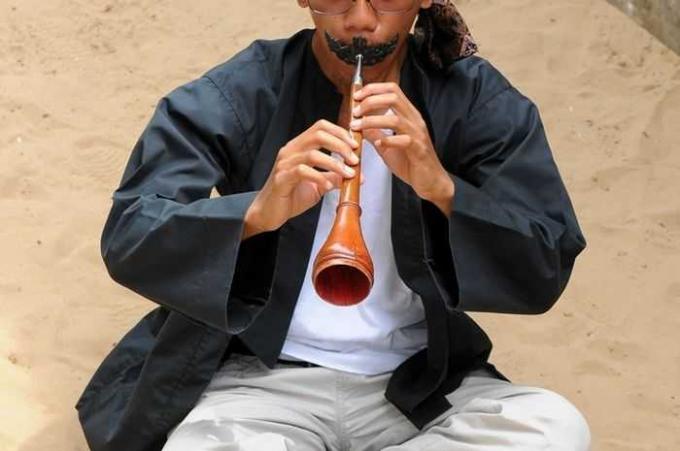
Saronen is one of the traditional East Javanese musical instruments originating from Madura. Saronen has a length of 40 cm, how to use the tool is by blowing and adjusting the tone using your finger.
Saronen has seven holes. One hole in a row at the back and six holes in a row in front. Saronen when played will produce a loud and loud sound.
12. Ul Dhaul
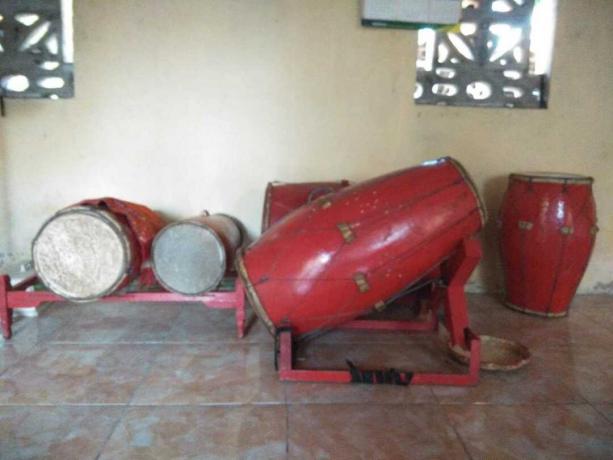
Ul Dhaul is one of the musical instruments originating from Madura, the first Ul dhaul was themed precisely in Sumenep.
How to use it is quite easy, you just have to beat it, Ul Dhaul is an ethnic percussion instrument that comes from East Java.
Ul dhaul is usually used to accompany a dance and also performances in the Madura and surrounding areas.
13. Tap Jaler
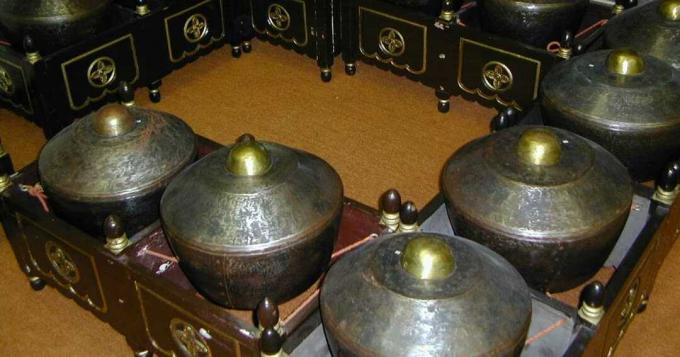
Kethuk Jaler is one of the musical instruments originating from East Java which is similar to the estri tap, the difference between the two instruments is that the sound produced is of course different.
Compared to the estri kethuk musical instrument, the jales kethuk musical instrument has a higher sound.
From the description above, the use of traditional East Javanese musical instruments is commonly used to accompany a typical East Javanese art.
East Javanese traditional musical instruments are also mostly influenced by various tribes and ethnicities.
In its development, traditional musical instruments are influenced by various eras. So many of us hopefully can add knowledge to all of us.
